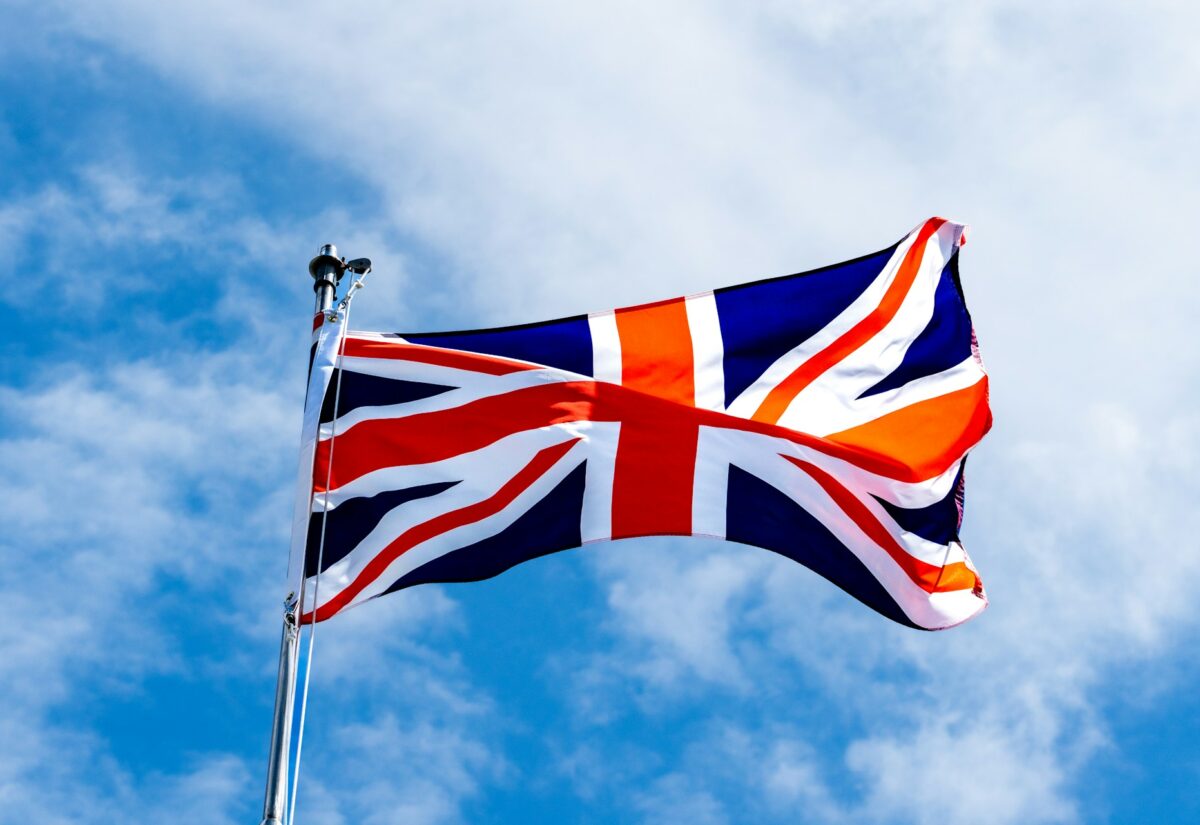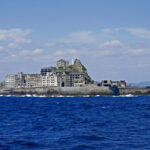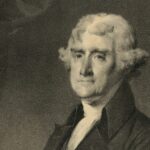 Unsplash/Chris Robert
Unsplash/Chris RobertWhen people hear the phrase “The British Empire,” they usually picture red-coated soldiers, Queen Victoria, and colonies stretching from India to the Caribbean. But Britain’s imperial story didn’t suddenly spring to life in the 18th or 19th centuries. Long before the Victorian age and the formal empire most of us were taught about in school, British rulers had already been casting their nets beyond their immediate borders.
Through dynastic marriages, wars of conquest, religious manoeuvring, and ambitious trade expansion, earlier British realms laid the groundwork for a culture of empire-building that would define the nation’s future. These overlooked or forgotten empires weren’t always called empires at the time—but they had all the hallmarks: overseas possession, economic control, military presence, and cultural dominance. Here are some of the forgotten British empires that existed well before the age of gunboats and colonies.
The Angevin Empire (1154–1216)
Often viewed more as a French-English hybrid, the Angevin Empire was a territorial collection so vast it rivalled anything else in Western Europe at the time. Ruled by the powerful Plantagenet kings, starting with Henry II, it included England, half of modern France (including Normandy, Anjou, and Aquitaine), parts of Wales and Ireland, and influence over Scotland. Henry II’s marriage to Eleanor of Aquitaine gave him control over incredibly wealthy and strategically valuable lands.
The empire was held together through vassalage, marriage, and military might—but it wasn’t built to last. Internal feuding, rebellions, and the disastrous reign of King John led to its collapse. Still, it set a precedent for English rulers managing expansive, multicultural realms—a challenge they’d face again and again in the centuries to come.
The Lordship of Ireland (1171–1542)
Following the 12th-century Anglo-Norman invasion of Ireland, Pope Adrian IV authorised Henry II to govern the island as “Lord of Ireland.” This papal backing gave the English crown religious legitimacy to exert influence there, although actual control was limited mostly to The Pale around Dublin.
The Lordship was essentially a semi-colonial venture long before that term came into widespread use, with Anglo-Norman settlers building castles, establishing towns, and enforcing English customs on Irish land. Over the centuries, English power ebbed and flowed depending on political will and local resistance. It wasn’t until 1542, when Henry VIII declared himself King of Ireland, that the Lordship became a kingdom in name—marking a new chapter of colonial integration.
The Scottish North Sea Empire (11th century)
Scotland isn’t typically associated with empire-building, but during the 11th century, several Scottish kings—including Macbeth and Malcolm III—exercised considerable influence across the North Sea region. Their reach extended into Norse-Gaelic territories such as the Hebrides, the Orkney and Shetland Islands, and sometimes even Icelandic trading networks.
These maritime connections were based as much on alliance and intermarriage as they were on military power. Control was often loose and episodic, but it created a web of influence stretching far beyond mainland Scotland. These early ventures into overseas politics helped forge a seafaring tradition that would later define Scottish roles within the larger British Empire.
The English Pale in France (1360–1453)
During the Hundred Years’ War, England’s control over parts of France reached a peak following the Treaty of Brétigny. Areas such as Gascony, Calais, and Aquitaine were governed directly by the English crown. The English didn’t merely occupy these regions—they established systems of taxation, installed loyal administrators, and brought over English settlers and merchants.
While the occupation was ultimately unsustainable, the administrative and economic tools developed during this period would later be refined and reapplied in places like Ireland and the American colonies. Even after the lands were lost, the legacy of English cultural and legal influence remained embedded in local institutions for decades.
The Kingdom of Mann and the Isles (1079–1266)
This maritime realm consisted of the Isle of Man and much of the Hebrides. Though it frequently changed hands between Norse rulers, Scottish kings, and the English crown, Anglo-Norman influence was particularly strong during the 12th and 13th centuries. The English crown maintained control through appointed governors and strategic marriages.
The region’s location made it a critical waypoint in controlling trade and military movement through the Irish Sea. It’s often overlooked because of its shifting allegiances, but its semi-autonomous governance under English suzerainty makes it a clear example of early British overseas management.
The Plantagenet Claims in Aquitaine and Gascony (1154–1453)
Acquired through the marriage of Henry II and Eleanor of Aquitaine, this vast and wealthy region of France was one of the English crown’s most prized possessions for centuries. Gascony, in particular, became a stronghold for English military and commercial interests. Wine exports, customs revenues, and fortified towns turned the area into an economic lifeline for the English monarchy.
English officials governed the region as colonial administrators in all but name, and generations of Gascons became used to dual allegiances. The region’s eventual loss in 1453 wasn’t just a military defeat—it was the end of England’s continental ambitions and a shift toward maritime expansion.
The English conquest of Wales (1277–1283)
Although Wales is now seen as part of the internal United Kingdom, Edward I’s campaign to subjugate and absorb it into the English realm was a clear act of conquest. After defeating Llywelyn ap Gruffudd, Edward built a ring of formidable stone castles—including Caernarfon, Harlech, and Conwy—to enforce control.
These were not just military outposts—they were symbols of imperial dominance and strategic planning. English laws were imposed, native rulers displaced, and colonists installed. This campaign provided a prototype for future expansion: combine overwhelming military force with administrative overhaul and symbolic architecture. Wales became a proving ground for the tactics later deployed in Ireland and, eventually, overseas.
Early English Trade Colonies and Commercial Outposts (14th–15th centuries)
Even before England held formal overseas colonies, it was establishing a network of trading enclaves across Europe. English merchants operated in the Hanseatic cities of northern Germany, in Genoa and Venice, and in outposts around the Bay of Biscay. They negotiated trade deals, established settlements, and often brought English law and customs with them.
The Merchant Adventurers and other guilds laid the groundwork for what would become larger-scale trade networks. These early efforts gave England valuable experience in cross-cultural negotiation, foreign diplomacy, and the economics of long-distance trade—skills that would be vital when the age of empire truly arrived.
The Calais Pale (1347–1558)
The city of Calais and its surrounding area remained in English hands for over two centuries after it was seized by Edward III. Though small in size, the Pale of Calais was treated like an overseas province, heavily fortified and carefully administered. It served as a vital commercial and military gateway between England and continental Europe.
English merchants used Calais as a hub for the wool trade, while successive monarchs used it as a launchpad for military campaigns. The loss of Calais in 1558 was a national trauma—Queen Mary I famously said that when she died, they would find “Calais” engraved on her heart.
The Anglo-Breton Connections (12th–15th centuries)
The Duchy of Brittany, though officially independent, had a long and complicated relationship with the English crown. Through strategic marriages, military alliances, and mutual enemies in France, England managed to exert soft power in the region for centuries.
At times, English monarchs claimed overlordship, sent troops, and maintained garrisons in Breton towns. This kind of informal imperialism—where influence didn’t always translate into direct rule—was a recurring feature in early British expansion and showed how fluid the boundaries of empire could be in medieval Europe.
These early realms, territories, and spheres of influence didn’t always fit the mould of modern empire, but they were clear expressions of British ambition and reach. Whether through feudal claims, religious authorisation, dynastic marriages, or commercial muscle, Britain was experimenting with empire long before the East India Company or the Royal Navy reshaped the globe.
If we really want to understand how the British Empire came to dominate so much of the world, we need to recognise that the seeds of that dominance were planted centuries earlier—quietly, strategically, and often with far less fanfare. They remind us that empire wasn’t born fully formed—it was a process, and a long one at that.



